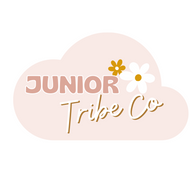Cloth nappy use is on the rise in Australia, with parents becoming more environmentally conscious and aware of the many benefits cloth nappies offer. One of the main benefits of using cloth nappies is the fact that they can be washed and reused, saving parents money over time, and reducing waste.
One of the questions that gets asked a lot is how long do cloth nappies last? To answer this question, we have to look at some different factors.
How Often they’re Washed and Worn.
Just like any pair of clothing that is worn multiple times, it's common for cloth nappies to show some wear and tear after years of regular use.
Regularly washing cloth nappies in top-load washing machines can be harder on cloth nappies than other machines. Sometimes altering the wash cycle can help prevent any damage. Washing the nappies in hot water can also drastically reduce the elasticity and thus the effectiveness of cloth nappies. To get the best use out of your cloth nappies, it is best to follow the manufacturer’s washing instructions closely.
Soaking
Soaking cloth nappies in chemicals or detergent can damage the elastic and PUL (polyurethane laminate) over time. If the cloth nappy has been spoiled, give it a quick rinse in water but avoid leaving it to soak for long amounts of time.
Drying
The best way to dry your cloth nappies is to air dry them outside or in an airy room which prolongs the life of your cloth nappies. If you can, lay them out on a rack or a hard surface rather than hanging them up to dry, as sometimes that can cause the elasticity on the nappy to stretch and sag.
Fabric
Some cloth nappies are made from less durable materials. While cotton and hemp can last for a long time, bamboo often has to be mixed with cotton and even then, it can break down faster.
Storage
Keeping the nappies in storage for years without regular use can cause the elastic to lose its elasticity. To avoid this, ensure that you follow the manufacturer’s instructions on how to store your cloth nappies.
How Many Cloth Nappies You Have
The more cloth nappies you have on hand and in rotation, the less you’ll have to use the same ones over and over again, meaning that they last longer and have less wear.
Washing and Care Instructions
- When you remove the nappy, dispose of any poo down the toilet and put the nappy and the reusable liner in a nappy pail. (If there is any poo on the nappy, give it a quick rinse before placing it in the pail). Don’t soak your nappies before placing them into the washing machine, and don’t leave them in the bucket for too long before washing them.
- Make sure all velcros, buttons and other fastenings are done up, so the nappies don’t get caught to one another and all tangled up.
- Do a cold rinse cycle first which will rinse away any solids and urine.
- Run the longest 40 or 60 degree wash cycle with the extra water function (depending on the manufacturer’s instructions). Use a detergent which is recommended for the style and make of your cloth nappy. (A non-bio detergent is best for bamboo and cotton material).
- Dry your nappies outside (the sun acts as a natural bleach), in an airing cupboard or a drying rack. Try to avoid drying them in a tumble dryer as that can damage the nappies over time and shorten their lifespan.
Other Tips
- Cloth nappies can stop being waterproof when they’re tumble dried too often or when they have been sitting in the nappy pail for too long (ammonia can degrade the fabric).
- If your cloth nappies have velcro fastenings, they may need to be defluffed regularly, so they don’t get too clogged up with fluff and aren’t able to be secured.
- New nappies should be washed a couple of times before being used - this increases their absorbency.
- Shake nappies before drying them (helps with drying speed and softness).
How long your cloth nappy lasts really depends on multiple factors, such as the material and make of each nappy, how you take care of your nappies, and how often they are used.
If they are well-made and taken good care of, they can last for years and can be used for multiple babies, saving you time and money.

